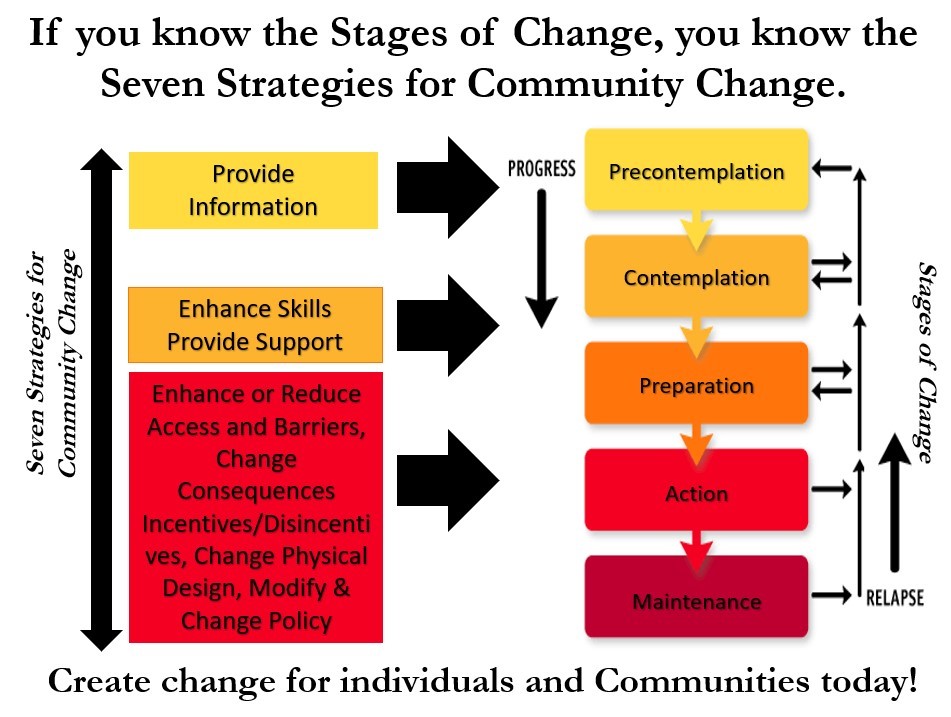As an individual working as a behavioral and public health professional you already know how to help make change. For instance, the Person-in-Environment Theory, and Bronfenbrenner’s Ecological Theory, are taught throughout many professional programs and practicums. These theories make it clear that the relationship between individuals and their contexts (family, school, community, media, etc.) are a two-way street, with individuals being both influenced by and influencing their environments.
This is easy to apply with individuals and families, for example you might work with a family to lock away their alcohol, prescription drugs or marijuana so it is not accessible to a teen who has recently started experimenting with substances and was found vaping. You may use motivational interviewing techniques to assess that family’s willingness to make that change using Prochaska and DiClementi’s Stages of Change. The strategies used with the family, and the focus of the work, varies based on whether they say they’re in Precontemplation (hadn’t thought of the idea and don’t see access as an issue) or Preparation (looking for ways to reduce access).
This example is familiar those who do individual level work. But did you know the Seven Strategies for Community Change which is followed by effective community prevention coalitions is very similar to the Stages of Change model for individuals?
The Seven Strategies for Community Change often mirror the skills we would use individually but apply the approach to communities. For example, social access to substances, as mentioned in the family example above, is a risk factor that can also be applied in the community context.
Providing Information (Strategy 1) on medication lock boxes to parents at a community forum may move both individual parents and the community towards Contemplating and preparing for reducing social access in a variety of ways.
Enhancing Access (Strategy 4) to locks or lock boxes by giving them to parents who sign a pledge to Modify or Change Policy (Strategy 7) at the family level to lock substances away helps move both family and community towards Action and Maintenance. Other examples of all Seven Strategies are available here.
So, you already know how to make change at both levels! Take part in addressing substance misuse at the community level today by joining your local coalition or reaching out to the Long Island Prevention Resource Center (info@liprc.org) for more details. We can help you align your skills with community change and plan specific strategies at each of the seven levels to help your community.




